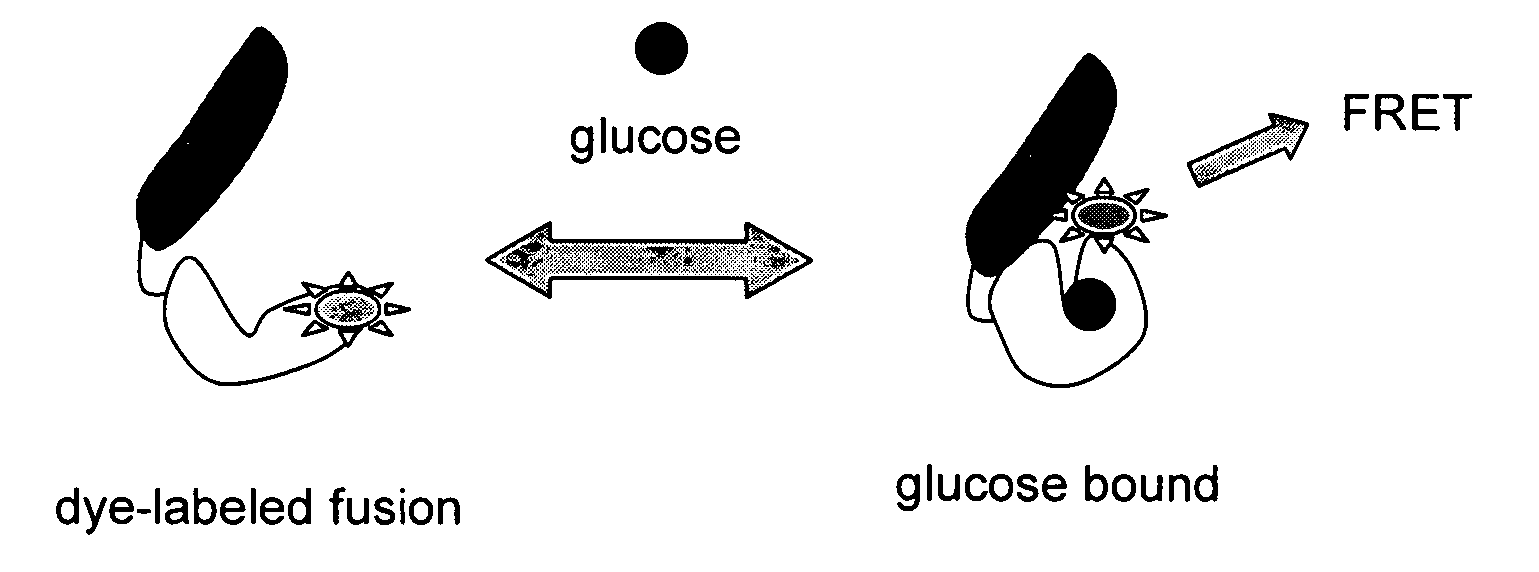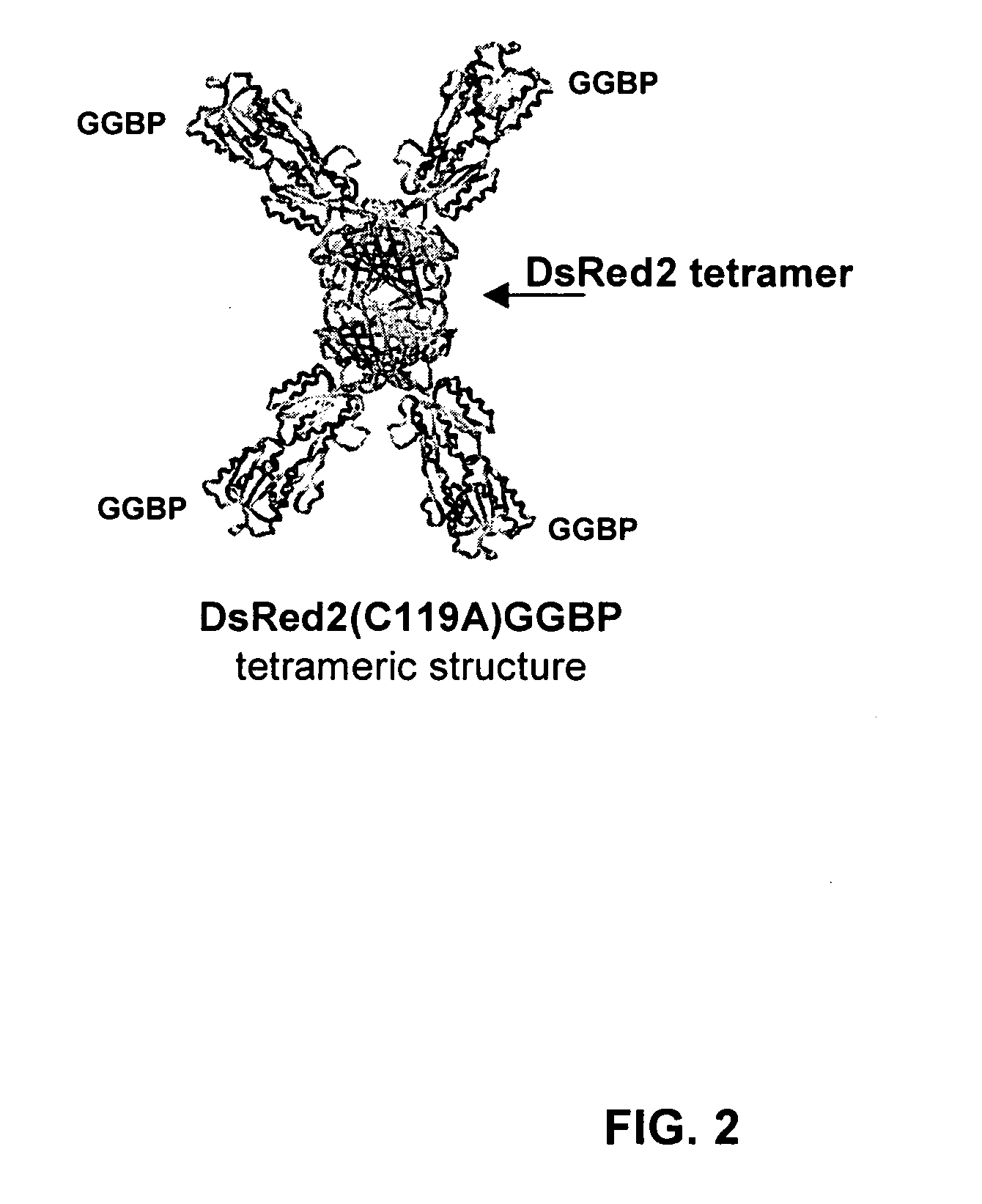Compositions and methods for measuring analyte concentrations
a technology of analyte concentration and composition, applied in the field of fusion proteins, can solve the problems of difficult patient compliance, inhibitors in the blood and electrodes, and easy detection of signals upon analyte binding
- Summary
- Abstract
- Description
- Claims
- Application Information
AI Technical Summary
Problems solved by technology
Method used
Image
Examples
example
Example 1
Preparation of Mutant GGBP and Fusion Constructs
[0071] Plasmid pTZ18R contains the MgLB gene from E. coli strain JM109. The GGBP gene was amplified from pTZ18R. The GGBP gene was ligated into the pQE70 plasmid to create a histidine-tagged protein that is wild-type in sequence, except for a lysine-to-arginine change at amino acid position 309, and the addition of a serine at amino acid position 310, before the six histidines at the C-terminus. The DsRed2 gene was amplified from (pDsRed2) and ligated to the N-terminus of the GGBP gene. A short three-alanine linker was engineered into the construct between the fluorescent protein and the histidine-tagged GGBP. Mutations of the GGBP and / or the fluorescent protein were generated in the construct by standard methods. For example, PCR was performed using primers that substitute codon(s) at or near the primary glucose contact sites. This removes the cysteine residue from the DsRed2 portion of the fusion so that when the fusion is...
example 2
Purification of Fusion Protein Comprising Mutant GGBP and DsRed2
[0072] The GGBP was expressed from E. coli strain Sg13009. After E. coli induction for 72 hours, the bacteria were lysed. The lysate was cleared by centrifugation and the DsRed2(C119A)GGBP(E149C,L238C) fusion protein was purified by immobilized metal affinitive chromatography (IMAC) using Talon (cobalt-based) Resin from Clontech. The fusion protein was concentrated using a 100 kDa cutoff filter. The protein was then dialyzed at 4° C. into a solution containing 1M NaCl, 10 mM Tris-HCl, and 50 mM NaPO4 (pH 8) and stored at 20° C.
example 3
Labeling of the Fusion Protein
[0073] Fluorophore coupling to a thiol-reactive dye was performed by site-specifically attaching the dye through a covalent bond at a cysteine residue. The fusion was first treated with dithiothreitol, and then a 10-fold molar excess of freshly prepared fluorophore (in this case acrylodan) in dimethyl sulfoxide was subsequently added. The mixture was incubated for four hours and any unreacted dye was removed by size-exclusion column chromatography and / or dialysis. The efficiency of the coupling of the dye to the protein was determined by absorbance.
PUM
 Login to View More
Login to View More Abstract
Description
Claims
Application Information
 Login to View More
Login to View More - R&D
- Intellectual Property
- Life Sciences
- Materials
- Tech Scout
- Unparalleled Data Quality
- Higher Quality Content
- 60% Fewer Hallucinations
Browse by: Latest US Patents, China's latest patents, Technical Efficacy Thesaurus, Application Domain, Technology Topic, Popular Technical Reports.
© 2025 PatSnap. All rights reserved.Legal|Privacy policy|Modern Slavery Act Transparency Statement|Sitemap|About US| Contact US: help@patsnap.com



